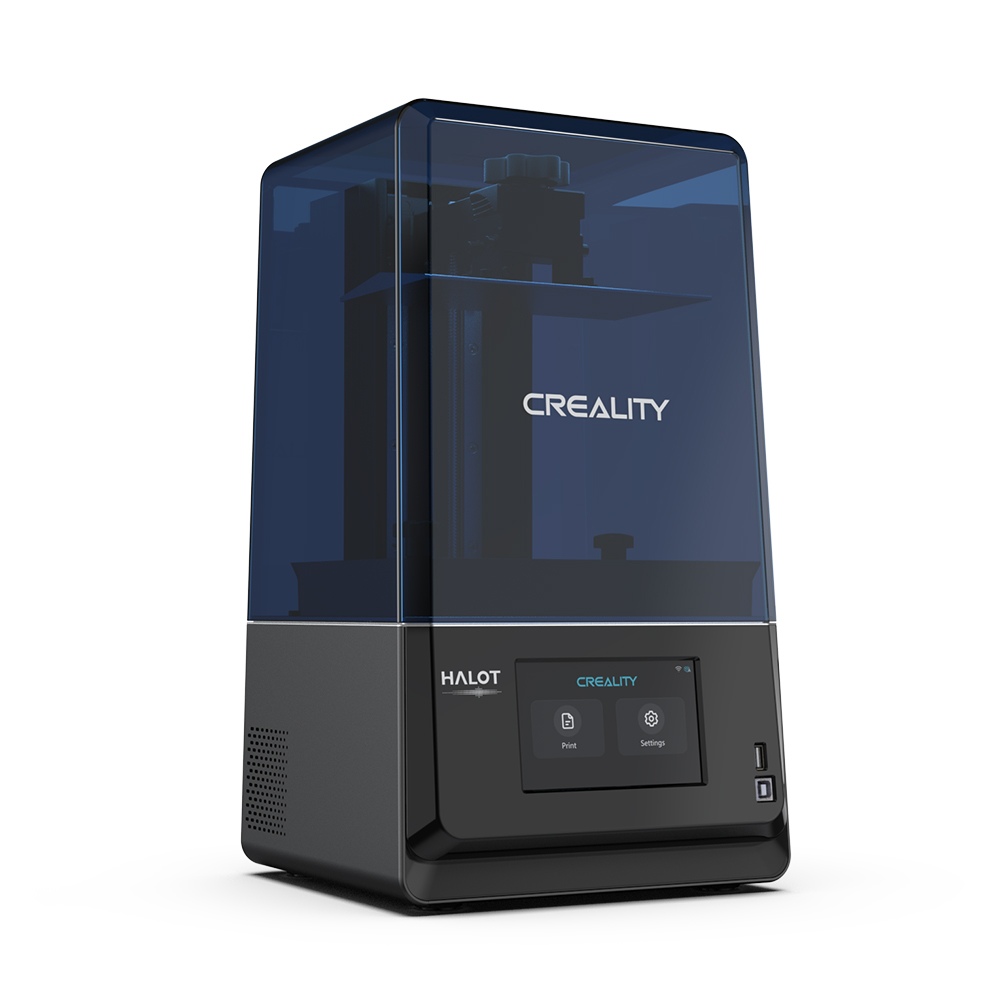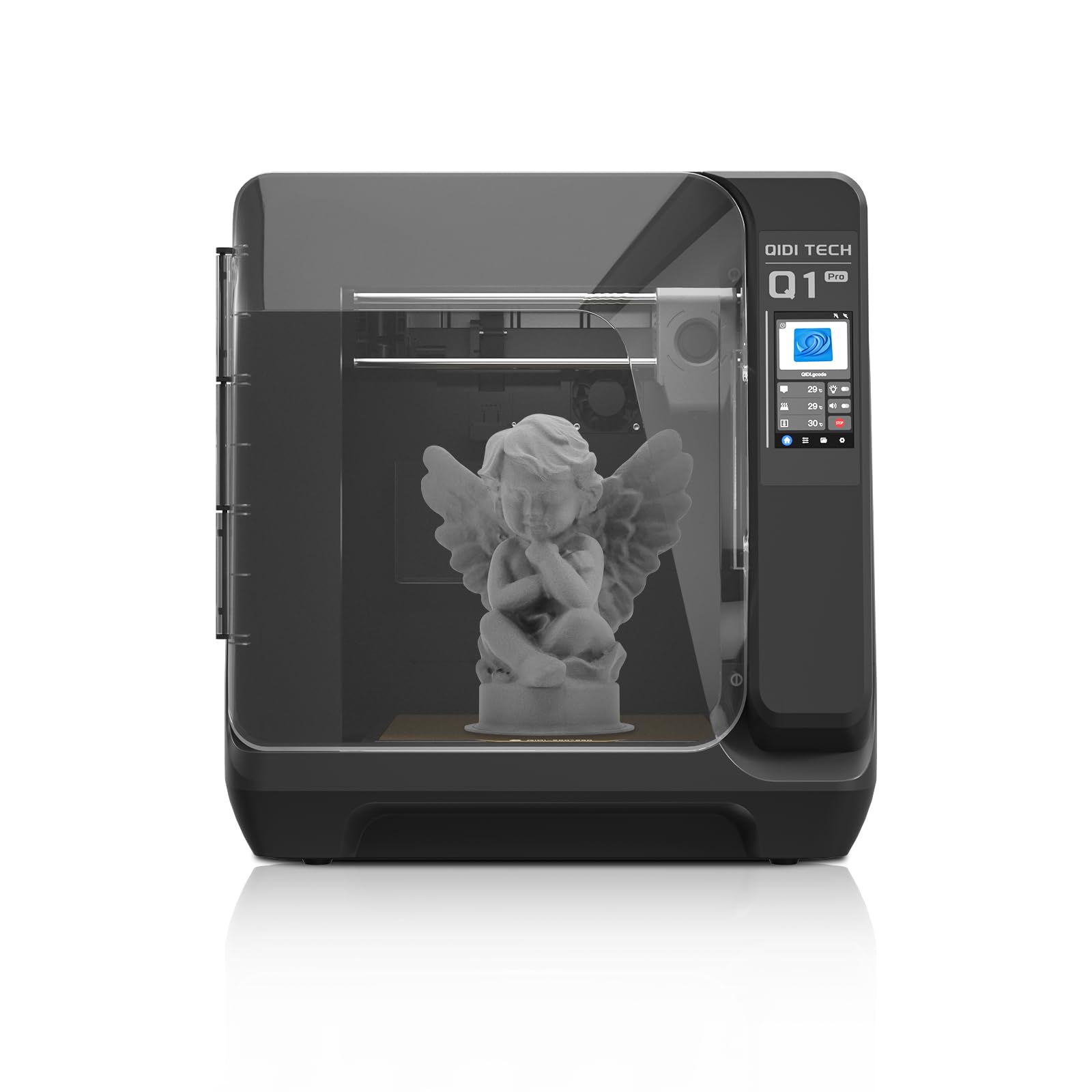Compare Halot One Plus vs Q1 PRO
Comparison between the best 3D printers
Choose the best 3D printer at the best price. The cheapest 3D printers are here.
Buy a 3D printer here with 3D Fila.
 |
 |
|
| Model | Halot One Plus[BUY Halot One Plus] |
Q1 PRO[BUY Q1 PRO] |
| Printing Material | Resin | Filament |
| Buy Resin for Creality 3D Halot One Plus | Buy Filament forQIDI Q1 PRO | |
| Estimated price | $399,00 | $449,00 |
| Manufacturer | Creality 3D | QIDI |
| Release Year | 2022 | 2024 |
| Print Volume [mm] | 102x172x160 | 245x245x245 |
| Printer Size [mm] | 236x245x416 | 467x477x489 |
| Weight [kg] | 6,8 | 20 |
| Power Loss Recovery | NO | YES |
| Maximum Resolution [mm] | 0,1 | |
| Processor | Cortex-A53,64-bit Processor | |
| Display | Touchscreen 4,3'' | |
| Power Supply | 350 W | |
| Connectivity | USB / Wi-Fi | WiFi/USB Flash Drive/Ethernet Cable |
| Operating systems | Windows, Linux, Macbook | |
| Date of registration in the system | 2022-10-11 | 2024-07-09 |
| Release date | 2022 | 2024 |
| Extra features | Crealitys Halot-One Plus printer stands out for its 4K+ resolution that delivers sharp details and consistent surfaces. It features a fast and responsive 5-inch LCD interface, as well as easy-to-use Halot Box software. It offers Wi-Fi connectivity and remote print monitoring, as well as an integrated air filtration unit, a rare feature in this price range. The Halot-One Plus is designed for the prosumer market, combining high quality with advanced features such as Wi-Fi and air filtration. During testing, it stood out for implementing these features at an affordable cost, while maintaining functionality. It features an attractive design with a UV-resistant blue cover and a robust dual rail system for the Z-axis, ensuring smooth and consistent movements. The large LCD and high resolution of the LCD mask (4320 x 2560) are other strong points, allowing for fine details and textures in prints. | The QIDI Q1 Pro 3D printer stands out for its Core XY structure and heating chambers that reach up to 60ºC, ideal for advanced materials such as ABS and Nylon. It features Klipper firmware, an automatic leveling system, a high-flow extruder with a double metal nozzle and a hotend that reaches 350ºC. It offers connectivity via Wi-Fi, USB and Ethernet, as well as a 1080p camera for remote monitoring and an intuitive touchscreen for easy operation. |
| Support for multiple colors and materials (AMS and CFS) | NO | NO |
Notes * |
||
| Cost-benefit | 8 / 10 | 8 / 10 |
| Hardware | 1.2 / 10 | 4.8 / 10 |
| Tela | . | . |
| Print volume | 3 / 10 | 3 / 10 |
| Performance | 9 / 10 | 5 / 10 |
| [BUY Halot One Plus] | [BUY Q1 PRO] |
Conclusion |
| In comparing the Halot One Plus and the Q1 Pro 3D printers, several key factors emerge that can guide potential buyers in making an informed decision. The Halot One Plus, released in 2022, is positioned as a prosumer printer that emphasizes high-resolution printing with a print volume of 102x172x160 mm. It features advanced components like a robust dual rail system for smooth operation, a capacitive touch display, and integrated air filtration. Its strengths lie in its affordability, compact size, and unique features such as Wi-Fi connectivity and easy-to-use software. However, it lacks power loss recovery, which may be a consideration for those who work in environments subject to interruptions. Conversely, the Q1 Pro, released more recently in 2024, offers a significantly larger print volume of 245x245x245 mm, making it suitable for larger projects. It incorporates features such as a Core XY structure, which enhances speed and precision, and is capable of supporting advanced materials due to its heated chamber and high-temperature capabilities. The inclusion of Klipper firmware and a camera for remote monitoring further enhances its appeal. Nonetheless, it is larger and heavier, which may limit its portability compared to the Halot One Plus. Both printers offer similar cost-to-benefit ratios, but they cater to slightly different needs and preferences. The decision may ultimately hinge on the types of projects intended. Users requiring high detail in smaller prints may favor the Halot One Plus, while those who need versatility and higher material compatibility in larger prints may find the Q1 Pro to be the better investment. In summary, each 3D printer presents its distinct advantages: the Halot One Plus excels in high-resolution detail and compact design, while the Q1 Pro stands out for its larger print volume and advanced material capabilities. Buyers should weigh these aspects against their specific needs and budget to determine which printer aligns best with their requirements. |

